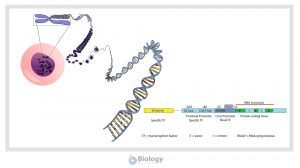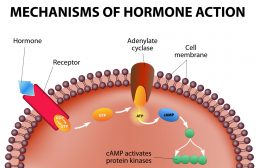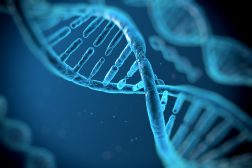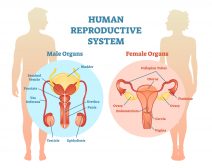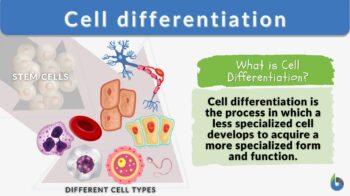
Cell differentiation
n., plural: Cell differentiations
[sɛl ˌdɪfəˌrɛnʃɪˈeɪʃən]
Definition: a biological process wherein a cell develops and acquires a more specialized form and function
Table of Contents
Cells are often described as the building blocks of life as they are the smallest unit used to build up organisms. Cells can be specialized or unspecialized cells and serve different purposes. What is a specialized cell? Specialized cells are those that have particular bodily structures and functions.
To create various tissue types, such as muscular tissue or nerve tissue, cell specialization collaborates in groups to build those tissues. Organs are constructed from tissues and provide a specific purpose for the body. Those special cells are modified in certain ways so that the body can use them for different processes.
These could be cells that carry blood like red blood cells or cells that assist with reproduction like those in the female egg. These cells of through the process of differentiation. A cell that does not differentiate is called a progenitor cell. What are differentiated cells? What is cell differentiation? Why do cells differentiate?
Cell Differentiation Definition
What is cell differentiation and why is it important? To define cell differentiation, one must think of how cells do become specialized and also the cell differentiation definition biology.
Cell differentiation is the natural process through which a cell with less specificity develops and matures to become more distinct in terms of form and function. It is the procedure through which a cell transforms into a different type of cell. The process of cell differentiation is based on how dividing cells alter their phenotypic or functional type.
What is a differentiated cell? The cell size, shape, polarity, metabolism, and responsiveness to signals change dramatically such that a less specialized cell becomes more specialized and acquires a more specific role. A cell that underwent differentiation is described as differentiated.
- A differentiated cell means a cell that has changed in form and matured from being generalized into being more specific in terms of function.
- The term undifferentiated is used to describe a cell (or a tissue) that has not yet acquired a special structure and function. An undifferentiated cell therefore would be a primitive cell or a progenitor cell that is yet to undergo cellular differentiation.
It is likely that all cells originate from stem cells and acquire their roles as they develop. The stem cell population is often positioned at the top of a hierarchical structure that represents cellular composition.
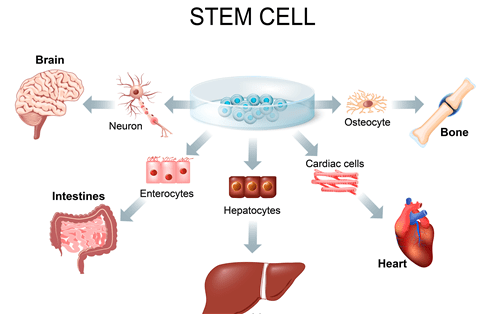
Watch this vid about cell differentiation:
Biology definition:
Cellular differentiation is a biological process in which a less specialized cell develops or matures to possess a rather distinct form and function than it previously was. It is the process in which a cell changes into another cell type. During cell differentiation, the changes may include cell shape, cell size, membrane potential, metabolic activities, and responsiveness.
These changes are brought about by modifications in gene expressions. An example of cell differentiation is the development of a single-celled zygote into a multicellular embryo that further develops into a more complex multisystem of distinct cell types of a fetus.
Variants: cellular differentiation
Compare: dedifferentiation
Which is the first type of cell to differentiate? Living things begin as one cell. All of the DNA code for the proteins that the adult organism will utilize is contained in this one cell. The cell wouldn’t operate if it produced all of these proteins at once. This cell must divide frequently, and each time it does so, the cells must start the process of cell differentiation. The cell lines start to form, and the cells become ever more specialized.
One of the cells in this instance is still genetically identical to the parent stem cell. Chemical triggers start the process of cell differentiation of the target cell, which then begins to express the DNA to acquire features of a certain cell type.
Embryonic stem cells are considered totipotent because these embryoid bodies have the ability to develop into any cell, or into a whole animal. These stem cells divide by asymmetric cell division.
Note it!
What is asymmetric cell division? What makes it different from a symmetric cell division? The stem cells divide in two ways — symmetric and asymmetric.
- In symmetric cell division, the two daughter cells will have the same developmental fate.
- In asymmetric cell division, the two daughter cells will have different developmental fates where one of them will differentiate into a specific lineage and the other cell may continue to remain as a stem cell that will divide asymmetrically.
Symmetric cell division is primarily for proliferation whereas asymmetric cell division is mainly for cellular diversity. (Berika et al., 2014)
The body also has a large number of cells that are just pluripotent. There has already been some cell differentiation in these cells. Only a few cell types can be created when these stem cells divide.
For instance, somatic stem cells found in or derived from bone marrow can only differentiate into red blood cells. These cells are essential for the ongoing replenishment of blood cells, which aside from their capacity to transport oxygen remain mostly inert.
A terminally differentiated cell (TD) is one that has irrevocably lost its capacity to multiply as a result of obtaining specialized capabilities, according to a traditional view. This seemingly straightforward definition rests on two shaky legs. This is an important fact when one considers cell death and differentiation.
Note it!
Some cells never differentiate and remain unspecialized cells for their entire life span. Other cells can be differentiated quite early and have specific functions for most of their cell life.
Cell Differentiation Examples
Examples of cell differentiation occur by means of sexual reproduction; both plants and animals are created from a single cell, a fertilized egg or zygote. To create a multicellular creature, these cells must undergo mitosis.
Animals go undergo mitosis throughout their bodies, whereas plants only go through it in certain places. The tips of roots and shoots include these structures, known as meristems. New cells are created here.
Different types of differentiations are:
- Adipocytes (fat cells) differentiation
- Osteogenic differentiation
- Osteoblast differentiation
- Keratinocyte differentiation
- Blood cell differentiation
- Monocyte differentiation – monocytes differentiate into different things depending on their derivatives. Monocyte-derived dendritic cells differentiate into cells that aid with inflammation and infection whereas monocyte-derived macrophages derive into cells that infection or the buildup of damaged or dead cells.
- Myeloid differentiation
- Induced pluripotent stem cells (IPSC) differentiation
- Cancer differentiation
- Red blood cell differentiation
- White blood cells differentiation
- B cell differentiation – activated b cells differentiate into memory B cells and long-lived plasma cells provide permanent protection, whereas short-lived plasmablasts provide instant protection.
- Gene differentiation
- Chondrogenic differentiation
- Preadipocytes differentiation
- Terminal differentiation
- Induced differentiation
READ: First time! Human blood cell turned into a young sex cell
The cranial, cardiac, vagal, and trunk neural crests are the four primary neuraxis segments from which neural crest cell derivatives are derived. The bulk of the connective and skeletal tissue, nerves, and pigment cells in the skull are produced by the cranial neural crest.
The C2C12 cell line was developed from myoblasts (undifferentiated cells giving rise to muscle cells) that Yaffe and Saxel first acquired in 1977 at the Weizmann Institute of Science in Israel. C2C12 cells are helpful in biomedical research since they were created for in vitro investigations of myoblasts removed from the intricate interconnections of in vivo circumstances.
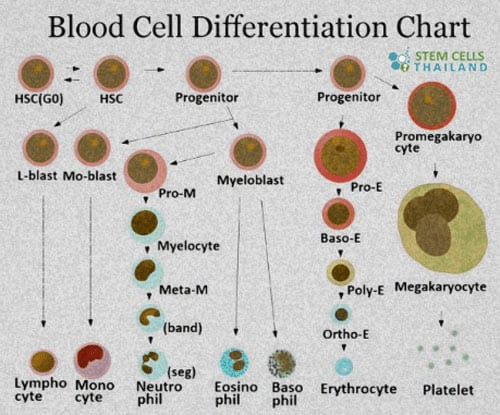
-
In Animals
Animal fertilization results in the formation of a zygote, which is a single cell. The totipotent zygote will eventually develop into multiple cells forming a whole creature. Even the blue whale, the biggest mammal on Earth, begins with a single cell.
The zygote is the source of all the intricate organ systems and tissues, which differ greatly in both shape and function. Within the organism, cell differentiation begins at a young age. The cells have already begun expressing distinct DNA segments by the time the gastrula forms.
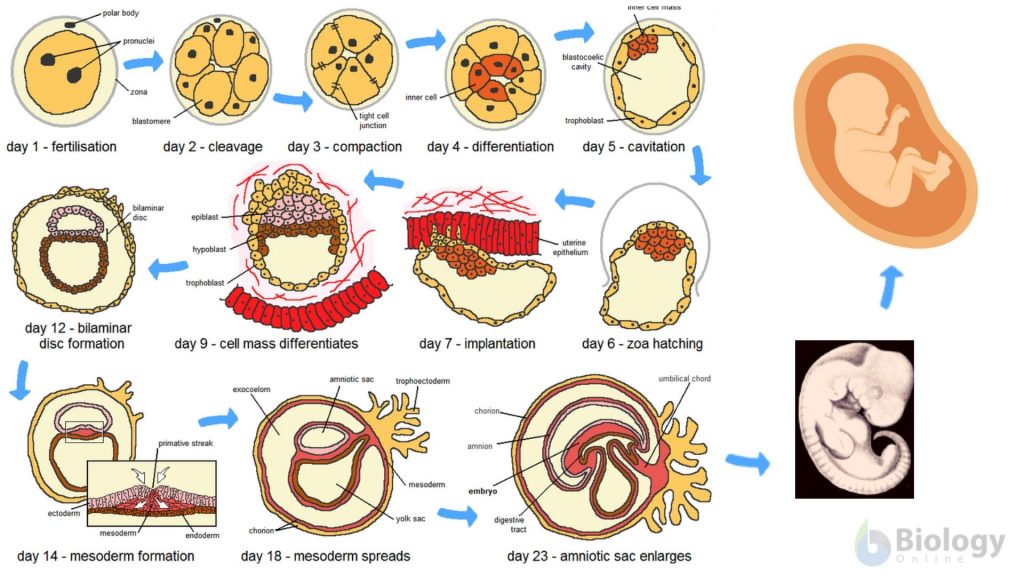
The embryo’s first folding processes are driven by these modifications. Some cells start producing hormones or chemical triggers as the tissues develop, telling other cells to respond. The expression of DNA is controlled by hormone signals, which promote cell differentiation in diverse body areas. A basic heart and circulatory system forms in humans in only a little more than a month.
Many stem cells lose their totipotency as the systems develop and start to differentiate into distinct types of cells. This enables the growing organism to produce specialized cells more quickly, which it needs to maintain development and succeed in the outside environment. From a single cell, tissues as disparate as brain tissue and muscle are created by cell differentiation.
-
In Plants
The process of cell differentiation is extremely comparable, despite the fact that the plant life cycle might occasionally look strange and convoluted. Although several hormones are involved, all plants start off as a single cell.
Simply put, a seed serves as the zygote’s protective home and food source. In the realm of animals, it is extremely comparable to an egg. After cell division, the zygote within develops into a tiny embryo. The distribution of the seed into the globe stops development.
The seed will take up moisture and resume growth after winter or whenever the conditions are ideal. Two meristems will start to develop inside the embryo. A distinct region of stem cells known as a meristem goes through cell differentiation as it spreads outward. The other will develop into the roots, while one will rise upward.
The root cap is the layer of cells that surrounds the meristem in the roots. As the roots travel through the soil, this layer of cells sheds and it is regularly replaced by the meristem. Cell differentiation takes place inside the meristem in a distinct manner.
Here, the cells are guided to form vascular tissue and supporting cells by the environment and hormones. These will ultimately transport nutrients and water to the plant’s apex.
The meristem appears to behave similarly. It produces both interior and exterior cells as it splits vertically. Similar to how the roots differentiate, the inward cells do as well, producing additional vascular tissue.
The cells differentiate externally to become stems and leaves. These are comparable to the many organs of animals and differ from primordial cells in the same way that animal cells do.
Pick up an acorn and contrast it to the enormous tree it will grow into if you’re still not persuaded. It is far smaller and has entirely different types of cells. The differentiation of cells can be used to explain this.
Cell Differentiation Process
Transcription factors are a crucial component of the cell differentiation process. Hormones and substances control what is transcribed and what is ignored by the processes that surround DNA. The body and nearby cells influence the variables that are present in cells from birth to death.
For instance, a hormone urging cellular growth may be released by the thyroid or pancreas. This transcription factor has an immediate effect on the proteins that copy DNA, resulting in the production of functioning proteins and more cells. However, when cells congregate, they will also communicate with one another that there is no more space. Thus, there are several inputs and potential outputs to the process of cell differentiation.
Research on this intricate mechanism is currently ongoing. Since the comprehensive understanding of the nematode C. elegans, scientists have made significant progress in their understanding of cell differentiation. As a mature female, this little worm-like organism has 959 cells altogether. In another study, C. elegans germline stem cell niche asymmetrically divides towards a niche-adjacent cell. (Gordon et al., 2020)
Cell Differentiation Significance
As was already established, cell differentiation is the process by which an undifferentiated cell becomes a specific kind of cell, allowing the zygote to progressively develop into an adult multicellular creature.
Cell differentiation is a crucial process through which a single cell gradually changes, enabling development that leads to the formation of diverse organs and tissues as well as an animal that is completely functioning.
The process of cell differentiation is crucial for the formation of complex organisms throughout the embryonic stage as well as during their whole lifespan. The reason for this is that it alters the size, shape, metabolic processes, and signal-responsiveness of cells.
Given that there are crucial regulatory mechanisms that only enable specific differentiation, gene regulatory networks and gene expression patterns are particularly crucial in cell differentiation. Here, the process shows its value by regulating certain behaviors to ensure both healthy tissues and organs and a fully functional animal.
Research on stem cells has also been affected by knowledge of cell differentiation. In order to regenerate and mend damaged cells, scientists and researchers are now figuring out the best technique to employ stem cells.
As was previously said, stem cells are significant because they can differentiate into any form of cell. Due to their ability to discriminate and their application for certain therapeutic reasons, they are particularly unique. An excellent illustration of this is the use of cells in elderly people. Many of the cells deteriorate as they become older. As a result, they are unable to separate or mend themselves.
To replenish and repair the damaged tissue, stem cell differentiation can continue into a variety of specialized cell types. The range of disorders that may be treated using stem cell treatment is thought to be infinite in theory. The effectiveness and safety of this kind of therapy are currently being investigated.
Primary Factors Influencing Cell Differentiation
In multicellular organisms, cell differentiation occurs when cells specialize and take on tasks like those of stromal cells, endothelial cells, neural cells, and epidermal cells. Cell signaling pathways, environmental effects, and the stage of organism development are all factors that contribute to cell differentiation.
After a sperm cell fertilizes an egg and the ensuing zygote reaches a particular size, basic cell differentiation takes place. The zygote then begins to produce various cell types and requires differentiated cells to take on the necessary specialized roles.
Gene expression is the primary process behind cell differentiation. Because the genetic code was replicated from the initial egg cell that was fertilized by the sperm cell, all of an organism’s cells have identical sets of genes. A cell will only express or use certain of the genes in its genetic code and disregard the others in order to perform a specific function. Cell differentiation is needed to regulate gene expression.
For instance, when a cell matures into a liver cell, it expresses the genes specific to liver cells, and all subsequent liver cells employ the same set of liver genes. Together, they will differentiate to become the liver.
Three circumstances lead to cell differentiation:
- The development of a young organism into an adult.
- Normal cell turnover in adult organisms, including that of blood cells.
- The replacement of specialized cells during the healing of damaged tissues.
Cell signaling lets cells know in each situation what kind of specialized cell is needed. To meet the demands of the organism, undifferentiated cells express the necessary genes.
Answer the quiz below to check what you have learned so far about cell differentiation.
References
- Berika, M., Elgayyar, M. E., & El-Hashash, A. H. K. (2014). Asymmetric cell division of stem cells in the lung and other systems. Frontiers in Cell and Developmental Biology, 2. https://doi.org/10.3389/fcell.2014.00033
- Cell differentiation—Cell division—Edexcel—GCSE Biology (Single Science) Revision—Edexcel. (n.d.). BBC Bitesize. Retrieved July 30, 2022, from https://www.bbc.co.uk/bitesize/guides/zws8h39/revision/5
- Cell Differentiation—Process and Steps, Specification/Determination. (n.d.). MicroscopeMaster. Retrieved July 30, 2022, from https://www.microscopemaster.com/cell-differentiation.html
- Factors Involved in Cell Differentiation. (n.d.). Sciencing. Retrieved July 30, 2022, from https://sciencing.com/factors-involved-cell-differentiation-6935462.html
- Gordon, K.L., Zyssman, J.W., Li, X., Miller, C. and Sherwood, D.R. (2020). Stem cell niche exit in C. elegans via orientation and segregation of daughter cells by a cryptic cell outside the niche. ELife; eLife. https://elifesciences.org/articles/56383
- Kelly, A., Grabiec, A. M., & Travis, M. A. (2018). Culture of Human Monocyte-Derived Macrophages. Methods in Molecular Biology (Clifton, N.J.), 1784, 1–11. https://doi.org/10.1007/978-1-4939-7837-3_1
- Monocyte-Derived Dendritic Cell Differentiation in Inflammatory Arthritis Is Regulated by the JAK/STAT Axis via NADPH Oxidase Regulation—PMC. (n.d.). Retrieved July 31, 2022, from https://www.ncbi.nlm.nih.gov/pmc/articles/PMC7358435/
- Sacco, A., Pajalunga, D., Latella, L., Siepi, F., Rufini, A., & Crescenzi, M. (2013). Cell Cycle Reactivation in Skeletal Muscle and Other Terminally Differentiated Cells. In Madame Curie Bioscience Database [Internet]. Landes Bioscience. https://www.ncbi.nlm.nih.gov/books/NBK6180/
- Shakhova, O., & Sommer, L. (2008). Neural crest-derived stem cells. In StemBook. Harvard Stem Cell Institute. http://www.ncbi.nlm.nih.gov/books/NBK44752/
- Specialized Cell Types & Examples | What is a Specialized Cell? – Video & Lesson Transcript. (n.d.). Study.Com. Retrieved July 30, 2022, from https://study.com/learn/lesson/specialized-cell-types-examples.html
- What is a Macrophage? (2010, March 24). News-Medical.Net. https://www.news-medical.net/life-sciences/What-is-a-Macrophage.aspx
©BiologyOnline.com. Content provided and moderated by Biology Online Editors.

